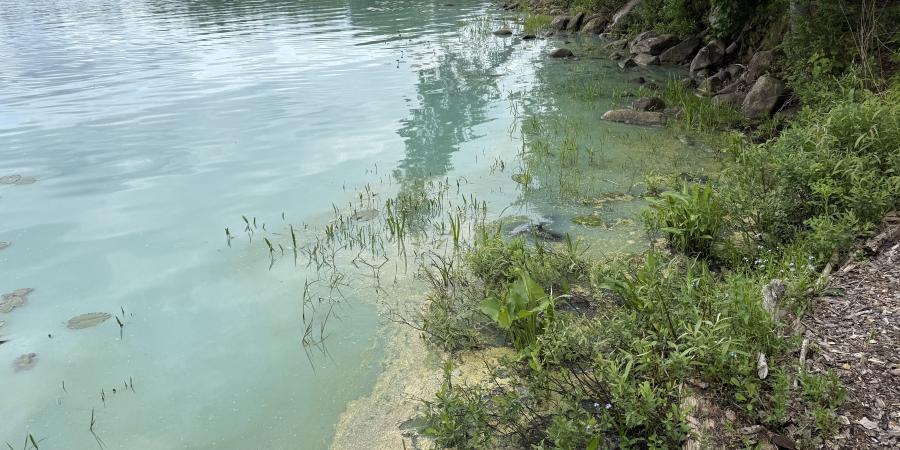Lately, it seems like there is a new warning about harmful algal blooms, or HABs, every day. While not all algae are harmful, it is important to be aware of HABs and their potential risks to aquatic ecosystems, humans, and other animals.
Background
Algae broadly refers to any photosynthetic organism that lacks leaves, stems, and roots. They are naturally present in most waterbodies. Algae make up the lowest layers of aquatic food webs and are therefore essential to maintaining the health of aquatic ecosystems; however, algae can become problematic when they overproduce and form blooms. In these cases, algae grow extremely quickly and can spread across large portions of waterbodies.
Algal blooms can occur in any type of water: fresh, salt, or brackish. In salt water, HABs are primarily formed by phytoplankton called dinoflagellates and are typically red in color, hence the name "red tide." In the Adirondacks, we have freshwater blooms produced by cyanobacteria, or blue-green algae.
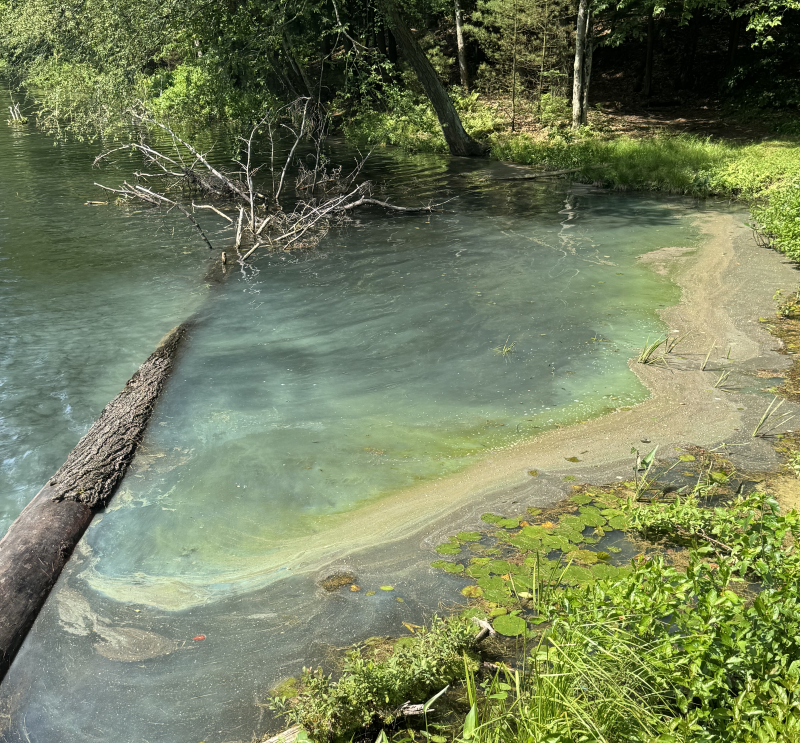
Algal blooms in the Adirondacks are generally blue or green in color. Photo: NYSDEC.
Causes
Algal blooms are created by a variety of conditions. Excess nutrients in the water, or eutrophication, is the primary driver of algal blooms. But waterbodies that are warmer in temperature, more stagnant, and are exposed to a lot of sunlight are most susceptible to blooms.
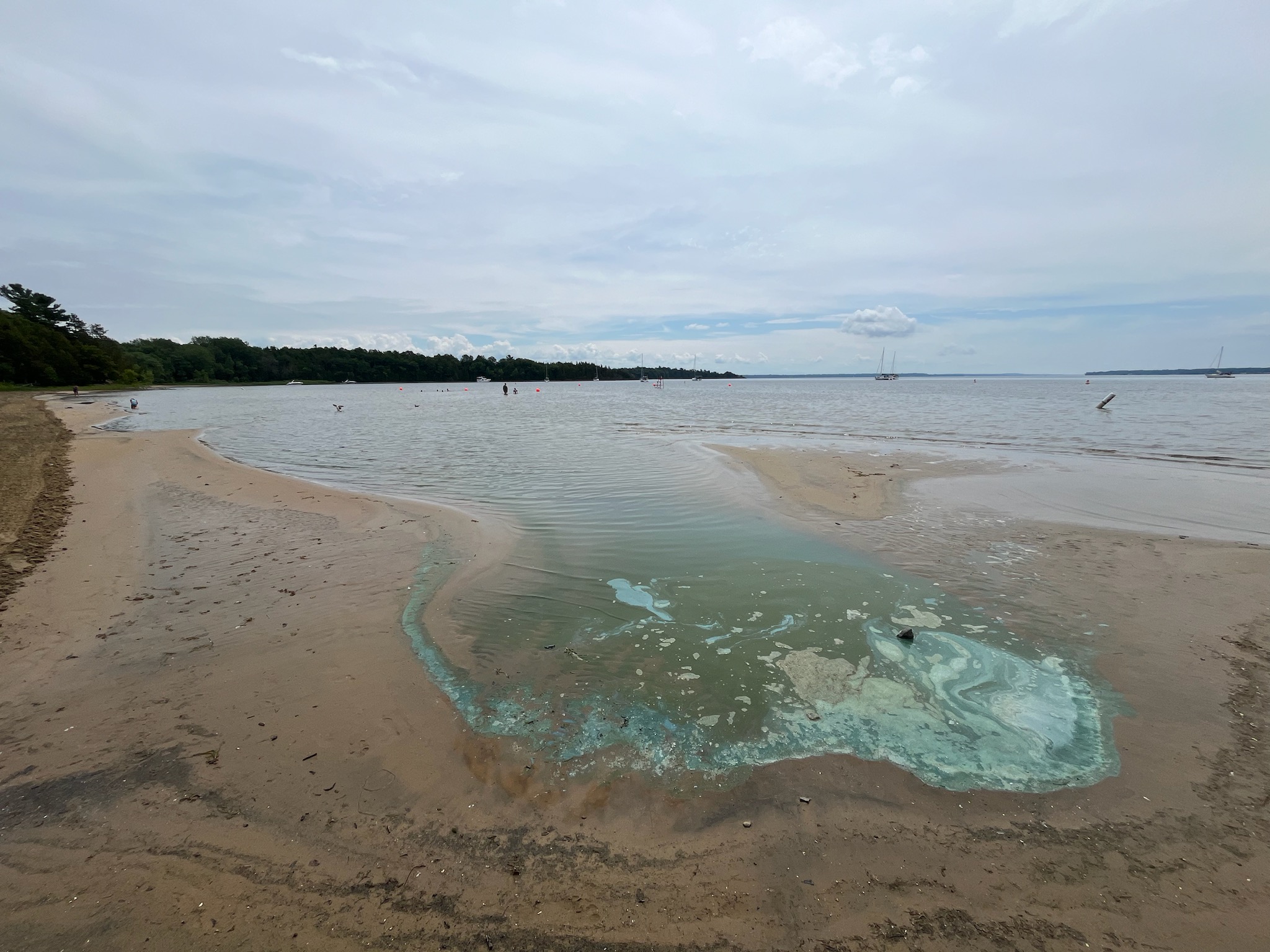
Blooms are more likely to occur in warm, stagnant water. Photo: NYSDEC.
Algal blooms are naturally occurring events, but they can be intensified by anthropogenic influences. Runoff from agriculture and failing septic systems, which contain high levels of nutrients like nitrogen and phosphorus, contribute to HABs. New York State is currently offering grants to residents with failing septic systems in certain areas of the Adirondacks in an effort to help combat this threat.
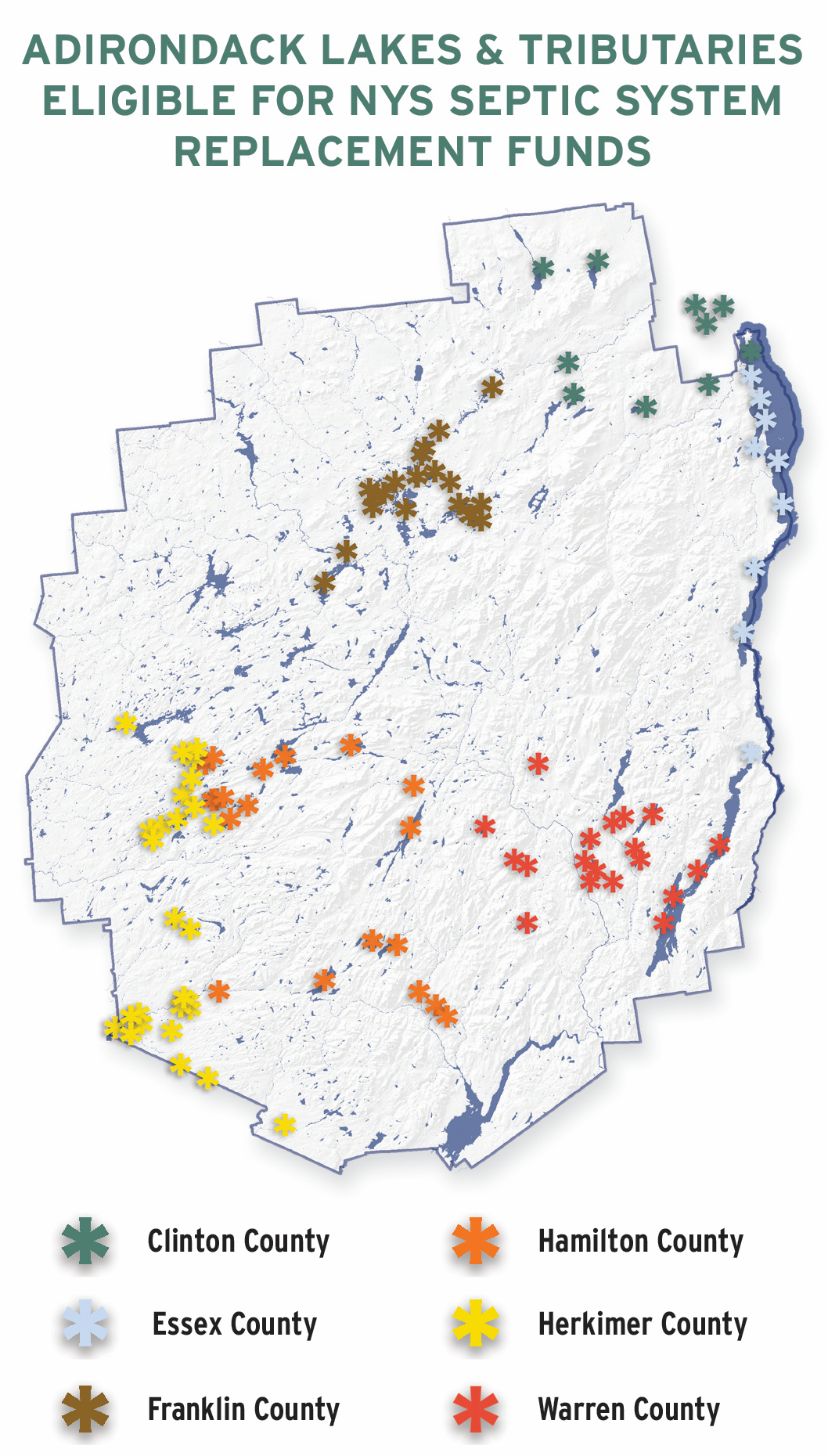
New York State is currently offering grants to cover septic system replacements near waterbodies prone to algal blooms. Contact your local County or Soil and Water Conservation District for more information. Photo: Adirondack Council.
While HABs are driven by excess nutrient concentrations, warmer temperatures due to changing climactic conditions amplify their prevalence. This is particularly true in the fall after lakes have experienced turnover. Longer periods of stratification can lead to deep-water anoxia, or the loss of dissolved oxygen. In anoxic conditions, nutrients such as phosphorus and nitrogen become more soluble, or readily dissolved in the water, and are released from the bottom sediments in higher concentrations. Following turnover, this excess of nutrients can increase the potential for HABs, especially on warm calm days.
Support our work for clean water and healthy streams. Give with confidence today!
Identification
As mentioned above, not all algae are harmful or toxic. In general, green algae can look silky, stringy, hairy, or like wet fabric and can be found on rocks, plants, or free floating anywhere in the water. They can form dense mats or rafts but do not produce harmful toxins. In contrast, cyanobacteria blooms can make an entire waterbody look green or blue, often described as “pea soup.” They can also present as spilled blue, green, or white paint, or as green streaks or green dots/ clumps on the water’s surface. These blooms are capable of releasing toxins into the water that can also persist on shorelines after the bloom has subsided. Even though there are visible differences between toxic and non-toxic algae, they can sometimes be hard to discern, so it is recommended to treat all blooms as if they are toxic.
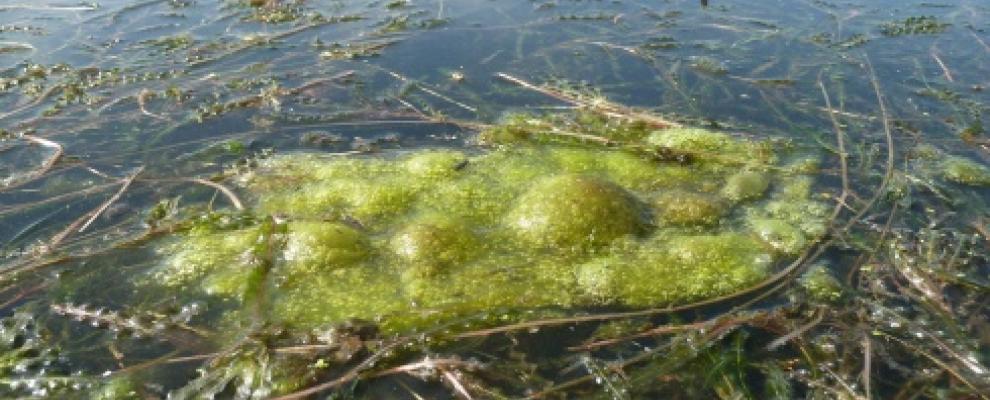
Generally, algae that looks hairy, silky, or stringy is not toxic. Photo: NYSDEC.
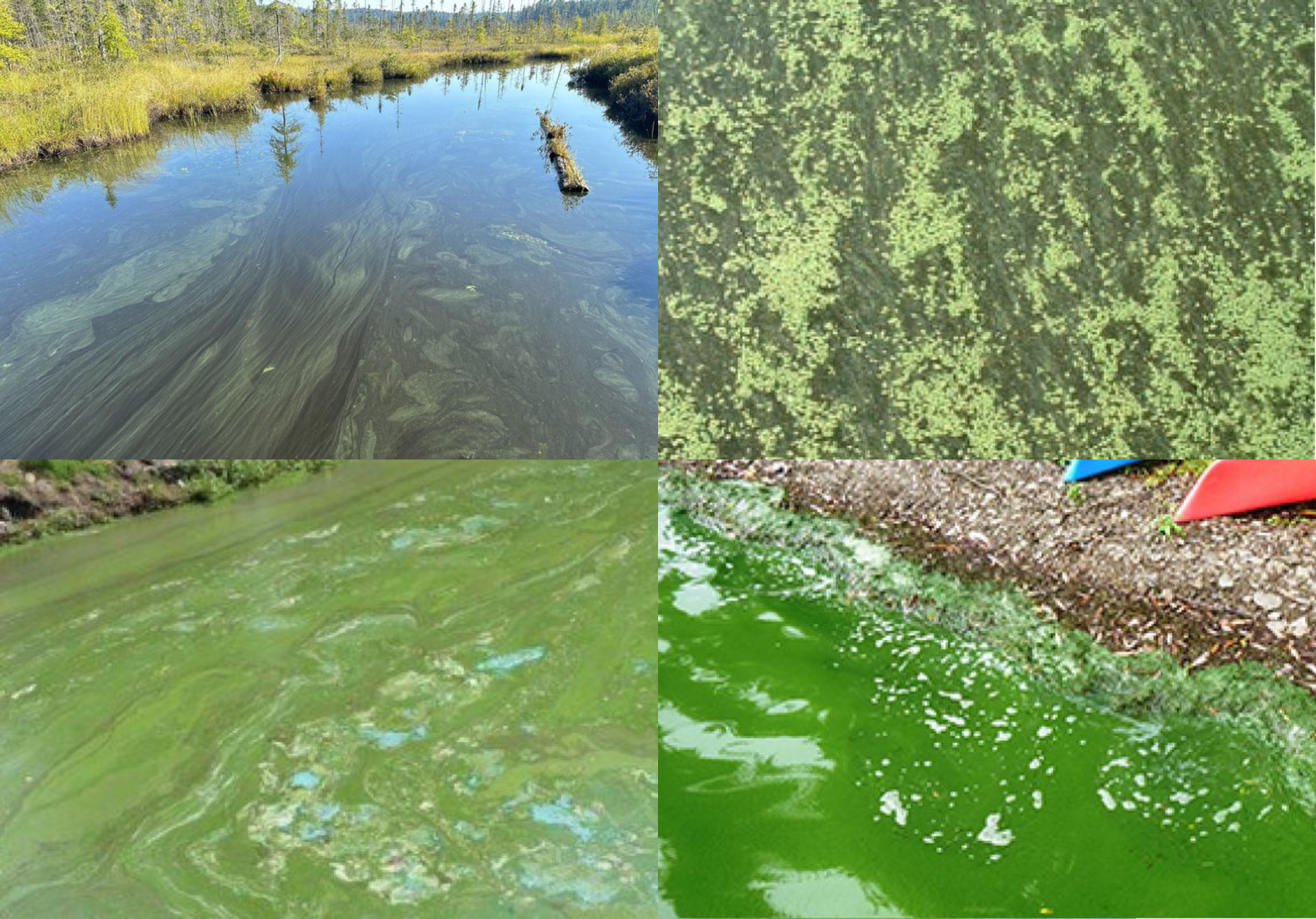
Harmful, or toxic, algal blooms can appear as streaks or clumps, like spilled paint or like pea soup. Top right photo: AWI. Top left and bottom photos: NYSDEC.
Risks
The overgrowth of algae on waterbodies can be detrimental to ecosystem health: it prevents sunlight from penetrating the surface while depleting oxygen within the water column. This creates stressful conditions for plants and animals in the water.
Like other environmental irritants, reactions to HABs can vary person to person. Ingesting water containing algae can cause gastrointestinal sickness and respiratory difficulties. Swimming in a bloom may result in allergic reactions as well as skin, eye, and throat irritation. It is important to avoid waterbodies affected by HABs and to keep pets away from them too. This includes swimming, drinking, or cooking with any untreated surface water.
Detection
In the last decade, many government and non-government agencies and organizations have taken steps to increase awareness and monitoring of HABs. In New York State, the Department of Environmental Conservation (DEC), along with the Department of Health and the Department of Agriculture and Markets, is actively studying HABs and has created HABs Action Plans for specific waterbodies.
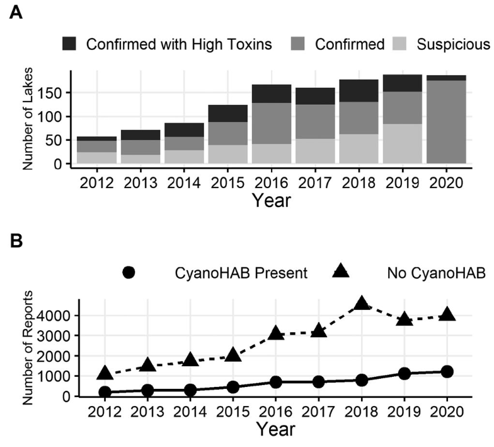
The number of reported HABs in New York State has increased throughout the last decade, but it is not certain whether this is due to increased occurrence of HABs, or increased awareness and better reporting systems. Source: Gorney et al., 2023.
Reporting
When it comes to HABs, the DEC follows a slogan of “Know It, Avoid It, Report It". They have created a HABs reporting and notification system, NYHABS. The system allows viewers to see where past and present HABs are located and report HABs as they happen. To report a HAB, visit this page and make sure to take plenty of pictures for documentation.
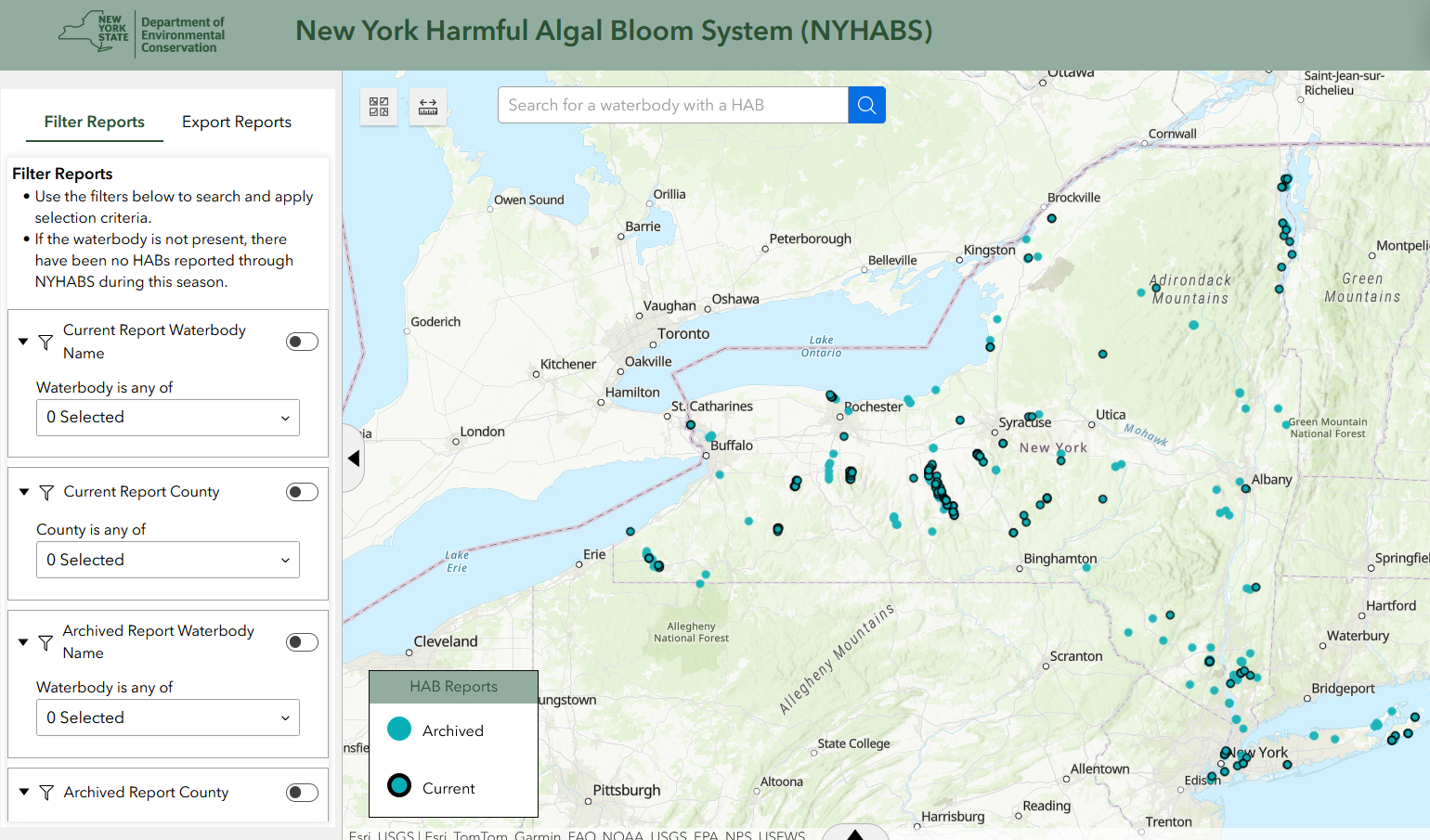
The New York Harmful Algal Bloom System (NYHABS) is an interactive database that documents the current year’s blooms.
Harmful algal blooms are a growing concern in our region, but with increased awareness, research, and mitigation, we can reduce their negative impact on water quality, wildlife, people, and pets and work toward preventing outbreaks in the future.
Story by Krista, Water Quality Research Associate. Top photo: NYSDEC
